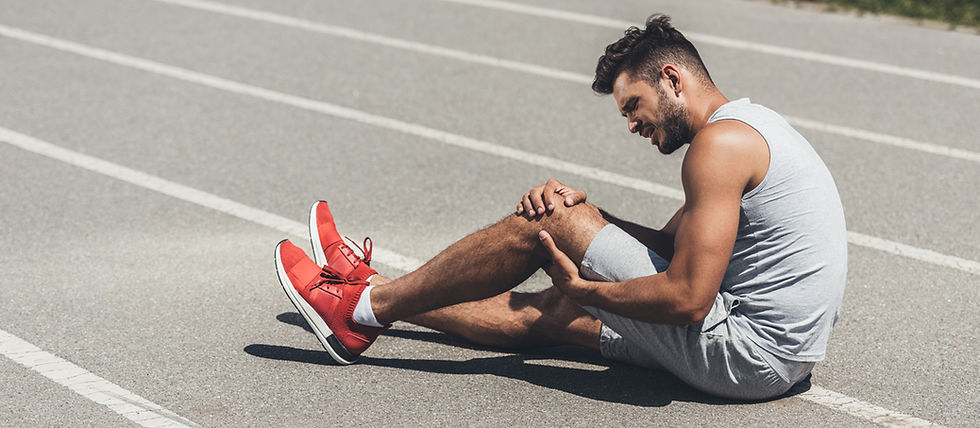Lowering your Handicap - The Osteopathic Way
- Henry Fensome M.Ost
- Nov 25, 2019
- 3 min read

Can an Osteopath really lower my Handicap? YES!!!
The golf swing is a highly complex movement pattern, which requires coordination of all of the bodies joints and muscles along with timing and balance. Due to the length of the golf club, small variations in movement are amplified resulting in large changes in golf-head trajectory. For this reason, even small dysfunctions in movement patterns can have large disturbances in your golfing performance and therefore this is how your Osteopath can help you lower your golf handicap.
The Golf Swing and Our Bodies
The human body intuitively chooses the path of least resistance. This is true in all human movements. In golf, the body has a goal, a target to aim for. That goal is to strike the golf ball with a neutral clubface and strike the ball in the centre of that face to produce a forward projection in a relatively straight manner. If somewhere along the back swing or downswing, there is an impediment to this motion, problems can arise with regards to:
The power produced by the body
The face of the club
The path which the club takes to reach the ball
Whilst these faults are often the result of poor motor co-ordination or a misguided perception of what produces a good swing, they can also occur when the body finds a restriction in the swing, and chooses a way around it to get to the golf ball.
Here is an Example; If a golfer is right handed then their right hip plays an important roll in the swing (vice versa for left handed). It determines the path of the club on the downswing. For a drive, the hips should translate and rotate towards the target, so that the torso, arms and hands can follow through on the plane, meeting minimal resistance. If for whatever reason, a player cannot translate their pelvis forward, and rotate to the left, this will mean that the path has not been cleared for the arms to move through, resulting in an "over the top" swing path. This can commonly lead to a fairly severe slice, as the player instinctively tries to get the club heading back towards the target, only to cut across the ball from the right to left (or out to in).

What Osteopaths Look for.....
When examining a golfer we look at the whole golfer in all aspects of the golf swing to identify any limitations in your movement which may affect your kinetic chain of the swing. We will look at how is affects your spine but also other joints in your body:
The neck/cervical spine: Eye contact on the golf ball means that a stable mechanical movement of the neck is fundamental to both your technique and physique.
Thoracic spine: an osteopath will ensure that this area of your spine is as flexible as possible, thus improving both your golf swing and overall posture.
Lumbar spine: your osteopath will look at your swing technique, specifically your speed and swing, as this is probably the most significant factor affecting the ligaments, tendons and muscles of your lower back.
Knee: the knee will be forced to absorb a large amount of torque and compression when you are swinging a golf club. This can sometimes lead to injuries such as tears to the cartilage or an aggravation of an already degenerative injury in the knee joint.
Shoulder: the shoulder can be placed at risk in several areas, including the rotator cuff. The shoulder is also at risk from labral tears (torn cartilage). Problems with the shoulder can usually be traced to the back swing.
Wrist: injuries occur as a result of the force transfer when the club first hits the golf ball. In older players, this can aggravate existing conditions such as arthritis or tendonitis.
Elbow: lateral epicondylitis is also known as “golfer’s elbow” and is a common upper extremity picked up by golfers. Repeated bending or straightening of the elbow can cause damage. Once again, older golf players can find themselves more at risk from this. As well as initial treatment, an osteopath can also work with you on ensuring the injury does not return in the future.

Treatment and Conditioning
Osteopaths approach the treatment of injury and dysfunctional movement in the same way. We look at how the body moves and what is causing it to not move efficiently. Once we have identified problematic areas we use a variety of different techniques to be able optimal performance, we do this through mobilisation, manipulation, kinesiology taping, cupping, acupuncture and soft tissue massage. we also provide a helpful exercise plan tailored to your specific needs to help maintain your swing and improve your handicap.




A comfortable thobe enhances your experience, encouraging you to participate fully in the celebrations. Choosing a thobe can lead to a best men thobes in uk more enjoyable and active event. Wearing a thobe is often associated with hospitality in many cultures.
Hi Henry,
You have shared such a nice and detailed article with us. Osteopath in Croydon approach the treatment of injury and dysfunctional movement in the same way. You are a gem of an osteopath community.